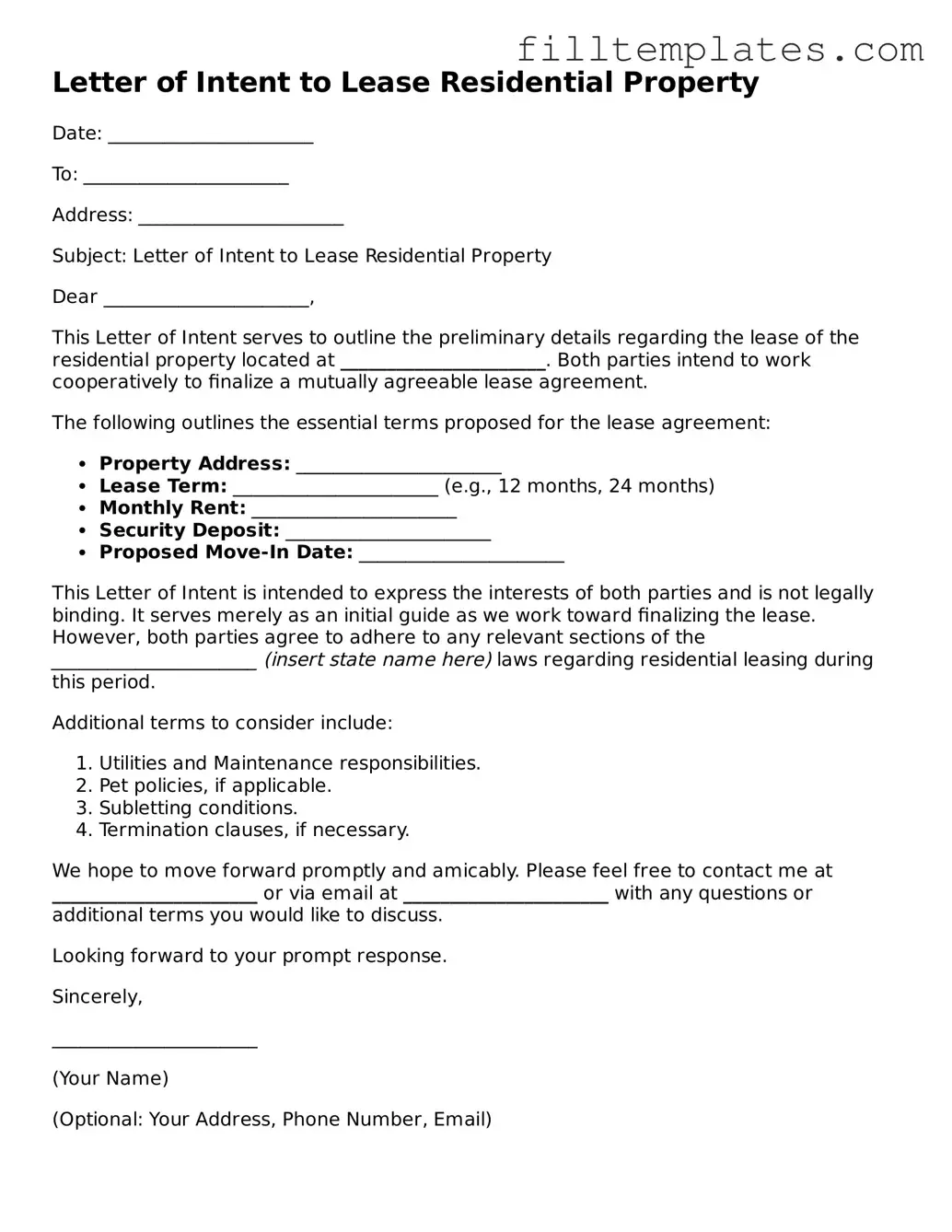Letter of Intent to Lease Residential Property
Date: ______________________
To: ______________________
Address: ______________________
Subject: Letter of Intent to Lease Residential Property
Dear ______________________,
This Letter of Intent serves to outline the preliminary details regarding the lease of the residential property located at ______________________. Both parties intend to work cooperatively to finalize a mutually agreeable lease agreement.
The following outlines the essential terms proposed for the lease agreement:
- Property Address: ______________________
- Lease Term: ______________________ (e.g., 12 months, 24 months)
- Monthly Rent: ______________________
- Security Deposit: ______________________
- Proposed Move-In Date: ______________________
This Letter of Intent is intended to express the interests of both parties and is not legally binding. It serves merely as an initial guide as we work toward finalizing the lease. However, both parties agree to adhere to any relevant sections of the ______________________ (insert state name here) laws regarding residential leasing during this period.
Additional terms to consider include:
- Utilities and Maintenance responsibilities.
- Pet policies, if applicable.
- Subletting conditions.
- Termination clauses, if necessary.
We hope to move forward promptly and amicably. Please feel free to contact me at ______________________ or via email at ______________________ with any questions or additional terms you would like to discuss.
Looking forward to your prompt response.
Sincerely,
______________________
(Your Name)
(Optional: Your Address, Phone Number, Email)
